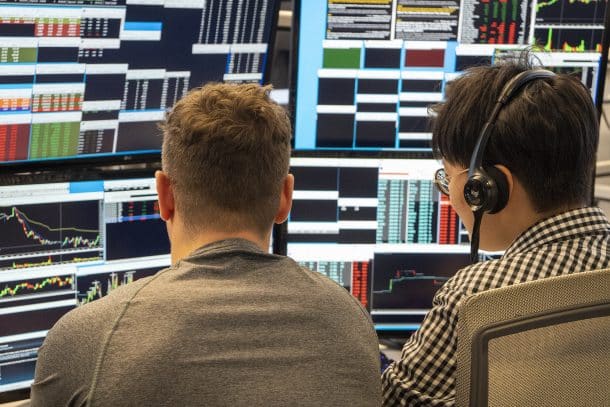******One blogger/trader/educator who does a wonderful job of sharing research on elite performance and how it relates to trading is David Blair, The Crosshairs Trader. Below is his latest Sunday Links post for the SMB Trading Community. We hope you enjoy!****** — Editor’s note
Charles Garfield, the author of the 1984 classic, Peak Performance: Mental Training Techniques of the World’s Greatest Athletes, lists eight physical and psychological principles inherent in athletes’ peak performance. Although specifically applied to athletes, these principles are just as applicable to stock traders.
Peak performers (and elite stock traders) are:
1. Mentally Relaxed: the athletes’ ability to concentrate was unusually sharp, allowing for calmness and focus in the heat of competition. Stock traders who are edgy, agitated, anxious, and impatient, are usually suffering from a lack of concentration thus leading to any number of trading errors such as overtrading, overexposure to risks, fear-based trading, etc.
2. Physically Relaxed: the athletes reported feeling loose and limber, not tight and awkward. Believe it or not, having a loose, relaxed physical state allows for a relaxed state of mind and vice versa. It is unusual to have one without the other. Stock traders who report aches and pains in the shoulders, neck, and lower back, not to mention the head, are most likely suffering from mental distress.
3. Confident and Optimistic: the athletes believed beforehand that they would perform well. Because the athletes spent numerous years training for a few hours of performance their confidence and optimism had grown. They had no reason to doubt that their past performance could not be repeated in the future; hence, their optimism. Stock traders who have not developed specific strategic skills will not be confident in an uncertain future. By not planning and sticking with a tried-and-true game plan uncertainty and pessimism will take over, sabotaging effective trading.
4. Focused on the Present: the athletes were “process”-oriented as opposed to “product”-oriented. In other words, the athletes were totally focused on the task at hand, not the last one or the next one. In golfing terms the last shot and the next shot does not matter, only the present one. Stock traders have the tendency to fret over the last trade and worry about the next one when all that really matters is the current one.
5. Highly Energized: the athletes were pumped up and ready for action. In other words, peak-performance athletes welcome a challenge and embrace it. The challenge is what the training is for! If you dread the possible outcome of a trade, or if you find yourself too frightened to look at a chart, then it may be time to take a break. As that famous trader Jesse Livermore once said, “every once in a while you must go to cash, take a break, take a vacation. Don’t try to play the market all the time. It can’t be done, it is too tough on the emotions.”
6. Extraordinary Awareness: the athletes reported being very much in tune with their mind, body, and environment. There was no disconnect among any of the three. This is much like Sun Tzu, who said that he who knows himself and the enemy (the environment) has no reason to fear a hundred battles. If there is fear of either then the battle will be fought in vain. Know your charts and know how you respond to them. If they are not in sync with one another, if there is no peace, then do not enter the battle. Bottom line: know yourself.
7. In Control: the athletes were always in control of their environment, not vice versa. Instead of making things happen by force they allow things to happen when it is time. They were prepared and ready when the right opportunity came knocking. Stock traders have a tendency to force a trade instead of allowing the market to come to them. When they force, the market takes; when they accept, the market gives.
8. In a “Cocoon”: the athletes reported being “in the zone.” This has been described in various ways as simply a time when an athlete is playing “out of his mind.” It is not something you train for; it is a state of mind that your training can prepare you for. If your mind is not right you cannot be ready to receive what “the zone” is willing to give. If, as a stock trader, you are impatient, anxious, fearful, greedy, stubborn, hopeful, etc., you will not be ready for “the zone.” Being “in the zone” means you are ready to accept what the market is willing to give when it is willing to do so. If you are not “in the zone” you will miss it.
Athletes and the markets have much to teach us if only we would prepare ourselves like athletes. The above principles can help us with our preparation and eventual success.
For further reading check out the following articles:
Once we learn to manage our expectations, peak performance will follow: Mental Game Success
Studying the habits and traits of professional traders: 7 Traits of Traders and Elite Athletes
What golf can teach us about trading: Golf and Trading
Confidence allows for better performance: Gaining the Mental Edge
David Blair
THE CROSSHAIRS TRADER
www.thecrosshairstrader.com
http://www.
Related blog posts:
Steps to Mastery
Triggering Elite Performance
No relevant positions

